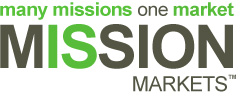Mission Markets Musings: Theda Braddock
Stormwater runoff has been identified as one of the largest sources of pollutants in the Nation’s waterways. Stormwater is rain and snow melt that runs off impervious surfaces such as roads and rooftops. In the draining process, the runoff picks up chemicals such as nitrogen and phosphorus as well as oil, heavy metals, fertilizers, pesticides, trash, and animal waste. Whether it is channeled in a storm drain or flows directly into streams and rivers, the end result is pollution of the ultimate receiving waterbody. In addition, if the flow rate is not controlled, the runoff delivers unnatural sediment loads to waterways and/or scours the bed of the receiving waterway destroying habitat. In urban areas the problem is acute due to the concentration of pollutants in stormwater. If the urban area is located on an estuary, the runoff gradually concentrates if tidal flushing fails to carry it away. Puget Sound and the Chesapeake Bay are two such estuaries surrounded by urban areas which both are experiencing pollution from stormwater runoff.
After spending some $5 Billion to clean up the Chesapeake Bay with little or no success, in December 2010, EPA issued the Chesapeake Bay Total Maximum Daily Load (TMDL), which identifies the necessary reductions of nitrogen, phosphorus and sediment from Delaware, Maryland, New York, Pennsylvania, Virginia, West Virginia and the District of Columbia waters. Each state submitted for approval a Watershed Implementation Plan detailing how it plans to achieve the allocations of pollutants established by EPA. A “nutrient trading” scheme was devised by Pennsylvania in which polluters who reduced their nutrient output in excess of the requirement could sell their excess “credits” to others who were not so successful. PennVest, the agency in charge of nutrient trading, held two auctions of nutrient credits in 2010.
The concept of nutrient trading is one of the fastest growing in the ecosystem market. Washington State farmers are looking to establish a similar program. Mission Markets now lists voluntary nutrient credits from Chesapeake EcoFinance, a Maryland-based firm. We anticipate many more such programs being devised across the country in the near term. By establishing TMDLs, EPA creates the cap. Trading is the natural consequence, and Mission Markets plans to be the marketplace.
- Theda Braddock, Mission Markets Director of Ecosystem Markets
Theda leads the ecosystem markets effort at Mission Markets and Mission Markets Earth with a particular focus in the areas of conservation based market mechanisms including wetland mitigation banking, conservation banking and water quality trading. Theda has been an environmental and securities attorney for over 20 years.
Mission Markets operates a private investment exchange facilitating transactions within the social and environmental capital markets. The Mission Markets platform provides companies and organizations with access to funding and impact investors an efficient way to evaluate, invest in and monitor sustainable investment opportunities.
MM11467

